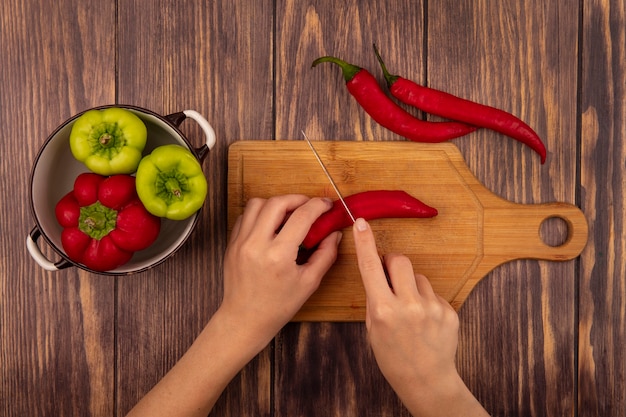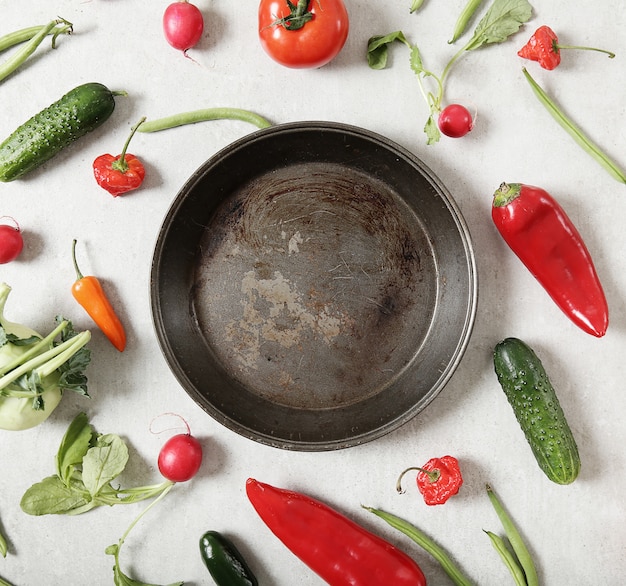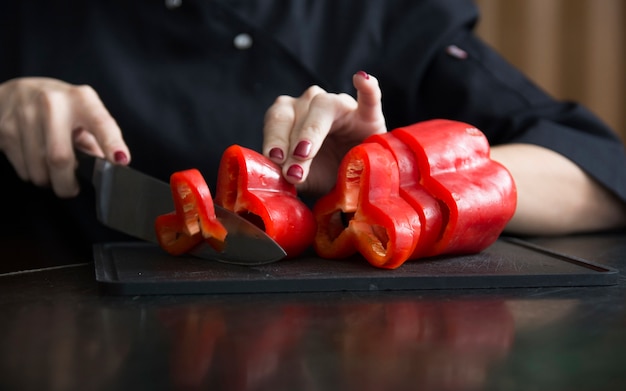I've been making chili for years, and it's safe to say I've learned a thing or two about getting that perfect flavour. It's not just about the ingredients – the magic truly lies in the simmering. The amount of time you spend gently coaxing those flavours out is crucial for achieving a chili that's truly irresistible. So, let's dive into the world of chili cook times, and discover the secrets to simmering perfection.
Part 1: The Science Behind Simmering

Understanding the Magic of Simmering
Simmering isn't just about keeping your chili warm. It's a transformative process that uses gentle heat and time to work wonders on your ingredients. Imagine it as a slow, controlled dance, where the heat breaks down tough fibres in the meat, making it unbelievably tender and juicy. The liquid gently reduces, concentrating those delicious flavours and deepening the sauce, creating a symphony of taste that just can't be rushed. It's like alchemy in the kitchen – turning ordinary ingredients into something truly special.
The Chemistry of Flavor
And it's not just about the meat. Those vegetables you carefully chose release their natural sugars and complex flavours as they simmer, adding layers of sweetness and depth. Your spices deepen and intensify, creating a rich, aromatic broth that fills your kitchen with the most inviting aromas. The key is finding that sweet spot – where the flavours are fully developed, but not overcooked. It's a delicate balance, and it takes a bit of experience to master. But trust me, the reward is worth the effort.
Part 2: The Ideal Chili Cook Time

The Starting Point: 2 Hours
For most chili recipes, a good starting point is 2 hours of simmering. This gives everything plenty of time to break down and meld, creating a flavourful and satisfying chili. I always start with this minimum, and then adjust based on the specific recipe and my desired intensity. Remember, everyone has their own chili sweet spot, and you'll discover yours through experimentation.
Factors that Influence Cook Time
There are several factors that can influence the ideal cook time for your chili. It's not a one-size-fits-all situation, so pay attention to these key variables:
- Meat Type: Tougher cuts of meat, like chuck roast or brisket, require longer simmering times to become tender. Think of them as needing a little extra love to soften up. Leaner meats like ground beef or turkey will cook faster, but remember, even they benefit from a good simmer.
- Desired Texture: If you prefer a thicker chili, you'll need to simmer for longer to allow the liquid to reduce. This concentrates the flavours and creates a lusciously thick consistency. For a thinner chili, a shorter simmer will keep things looser.
- Spice Level: Hotter peppers, like jalape??os or habaneros, release their heat over time. If you're using a lot of chili powder or hot peppers, you may want to simmer for a shorter time to prevent the chili from becoming too spicy. You can always add a little more later if you need that extra kick.
The Importance of Slow and Steady
Remember, simmering is about gentle heat, not a rolling boil. Imagine your chili in a gentle, rhythmic dance, with tiny bubbles rising to the surface, but not breaking the surface. A rolling boil will cook the chili too quickly, potentially making the meat tough or drying out the sauce. A slow and steady simmer is the key to unlocking that perfect chili flavour. Patience is key – it's about letting those flavours unfold like a beautiful symphony.
Part 3: The Art of Tasting and Adjusting

The Taste Test
The best way to determine if your chili is ready is to take a taste test. After the initial 2 hours, grab a spoonful and savour the flavour. Is the meat tender? Are the flavours well-balanced? Is it the desired level of spiciness? If not, don't be afraid to adjust the cook time accordingly.
Tips for Adjusting
Here are some tips to guide you in adjusting the cook time based on your tasting notes:
- More Tenderness: If the meat is still tough, give it another 30 minutes to an hour. That extra simmering time will work its magic, making it melt-in-your-mouth tender.
- Thicker Chili: If you want a thicker chili, simmer for another 30 minutes to an hour, or until it reaches your desired consistency. Keep an eye on it, and adjust the time based on how quickly the liquid reduces.
- More Depth: To deepen the flavours, simmer for another 30 minutes to an hour. You can also add a tablespoon of tomato paste at this point, which will further enhance the depth and complexity of the chili. The tomato paste adds a beautiful richness that you can't get any other way.
- Less Spice: If the chili is too spicy, you can add a tablespoon or two of sugar or honey to balance out the heat. This will add a touch of sweetness and tame those fiery notes.
The Patience is Worth It
Don't be afraid to experiment and find what works best for you. Remember, there's no one-size-fits-all answer when it comes to chili cook time. The beauty of chili is that it's a flexible dish that can be tailored to your personal preferences. Be patient, be adventurous, and most importantly, enjoy the process! It's a journey of discovery, and the delicious reward is well worth the effort.
Part 4: The Art of slow cooking
The Power of slow cookers
Slow cookers are a godsend for chili lovers. They're like magic ovens, allowing you to simmer your chili for hours on end, with minimal effort. The slow, gentle heat of a slow cooker creates a truly tender and flavourful chili. It's a perfect way to let those flavours develop, while you go about your day, knowing that a delicious meal is taking shape.
Slow Cooker Cook Times
For slow cookers, the general rule of thumb is to cook your chili on low for 6-8 hours or on high for 3-4 hours. However, remember that the specific cook time will vary depending on the recipe and your desired texture. I find that slow cookers are particularly great for tough cuts of meat, as they allow the meat to break down completely and become incredibly tender. It's like a slow and steady massage for your meat, making it unbelievably soft and delicious.
slow cooker tips
Here are a few tips to help you create the perfect slow cooker chili:
- Brown the Meat: While it's not strictly necessary, browning the meat before adding it to the slow cooker will give your chili a richer flavour. It's a quick step that adds an extra layer of depth to the finished dish.
- Don't Overcrowd: Leave some space in the slow cooker for the ingredients to circulate and cook evenly. Don't cram it too full! You want to ensure that everything is submerged in the liquid and has room to move around.
- Stir Occasionally: Give your chili a stir every couple of hours to ensure even cooking. It's best to check on your chili every now and then, and a gentle stir helps ensure that everything gets a chance to simmer in that delicious broth.
Part 5: The Chili Cook Time Cheat Sheet
The Quick and Dirty Guide
For those of you who prefer a quick and easy guide, here's a cheat sheet to help you determine the ideal cook time for your chili:
| Meat Type | Cook Time on Stovetop (Simmer) | Cook Time in Slow Cooker (Low) |
|---|---|---|
| Ground Beef | 2 hours | 6-8 hours |
| Ground Turkey | 1.5 hours | 4-6 hours |
| Chuck Roast | 3-4 hours | 8-10 hours |
| Brisket | 4-6 hours | 10-12 hours |
Remember
These are just general guidelines. Always check your recipe for specific instructions, and adjust the cook time as needed based on your preferences. And remember, if you're unsure, a little extra time never hurts! It's better to be safe than sorry, and you can always adjust the texture later if needed.
Part 6: The Role of Chili Powder
The Spice of Life
Chili powder is the heart and soul of any good chili. It's a complex blend of spices that adds depth, complexity, and heat, giving your chili that signature flavour. The quality of your chili powder will significantly impact the flavour of your chili. So, invest in a good one!
The Perfect Chili Powder
I always recommend using a high-quality chili powder that's been freshly ground. You can even make your own blend by combining different spices like cumin, paprika, oregano, garlic powder, and cayenne pepper. The ratio of these spices will determine the flavour profile of your chili powder, so experiment and find your perfect blend!
Using Chili Powder
The amount of chili powder you use will depend on your personal preference for spiciness. Start with a small amount and add more to taste as you cook. Remember, the flavours will deepen and intensify as the chili simmers. You can always add a little more if you need a bolder flavour, but it's easier to start with less and add more as you go.
Part 7: The Importance of Liquid
Liquid is Key
The liquid you use in your chili will play a crucial role in the flavour and texture. I always use a combination of beef broth and beer. The broth adds depth and richness, while the beer adds a touch of bitterness and complexity. It's a classic combination that creates a truly satisfying chili.
Other Liquid Options
You can also use other liquids like tomato juice, water, or even chicken broth. Experiment with different options to find what you like best. Each liquid adds a unique dimension to the flavour profile, so be adventurous and explore new possibilities.
The Right Amount of Liquid
The key is to use enough liquid to cover the ingredients, but not so much that the chili becomes watery. You can always add more liquid later, but it's difficult to remove excess liquid without compromising the flavour. It's better to start with less and gradually add more if needed, as you get a feel for the consistency you want.
Part 8: The Finishing Touches
Adding the Finishing Touches
Once your chili has simmered to perfection, it's time to add the finishing touches. These are the details that will take your chili from good to great. It's like adding a final flourish to a masterpiece, and these little details make all the difference.
Common Additions
Here are some popular additions that will enhance your chili's flavour and texture:
- Sour Cream or Greek Yogurt: Adds a creamy tang and a touch of acidity. The smooth richness of sour cream or Greek yogurt adds a wonderful contrast to the bold flavours of your chili.
- Chopped Cilantro: Adds a fresh, herbaceous flavour. A sprinkle of chopped cilantro adds a vibrant, aromatic touch, bringing a burst of freshness to the dish.
- Shredded Cheddar Cheese: Melts beautifully and adds a cheesy flavour. The melted cheddar cheese adds a creamy, cheesy dimension, and it melts beautifully into the chili, creating a warm and satisfying texture.
- Avocado: Adds a creamy texture and a healthy dose of fats. A dollop of avocado adds a smooth, creamy texture and a rich, buttery flavour. It's a delicious and healthy addition that adds a touch of luxury to your bowl.
Experiment and Have Fun
Don't be afraid to get creative and experiment with different toppings. The beauty of chili is that it's a blank canvas for your culinary creativity. There are no rules! Try different combinations, play with flavours, and discover what you enjoy most.
Part 9: FAQs
1. Can I overcook chili?
Yes, it's possible to overcook chili, especially if you're using leaner meats. Overcooked chili will be dry and tough. If you suspect your chili is overcooked, you can add a bit of liquid to bring back some moisture. You can also try adding a tablespoon of butter, which will help to add richness and moisture to the chili.
2. What if my chili is too thin?
If your chili is too thin, you can simmer it for longer to allow the liquid to reduce. You can also add a cornstarch slurry (mix cornstarch with a bit of cold water) to thicken the chili. This simple trick will help to thicken the chili without sacrificing its flavour.
3. Can I freeze chili?
Yes, you can freeze chili for up to 3 months. Let the chili cool completely before freezing, and then store it in an airtight container. Freezing is a great way to save leftovers and enjoy that delicious chili later.
4. What can I do with leftover chili?
Leftover chili is incredibly versatile! You can use it in tacos, burritos, nachos, or even as a topping for baked potatoes. Get creative and explore the many ways to enjoy your chili leftovers.
5. What is the best way to reheat chili?
The best way to reheat chili is on the stovetop over low heat. You can also reheat it in the microwave, but it might lose some of its flavour and texture. Reheating on the stovetop allows for a more gentle and even heating process, preserving the delicious flavours and textures.
Conclusion
The perfect chili cook time is a journey of experimentation and discovery. Don't be afraid to try different methods and find what works best for you. Remember, the most important ingredient in any chili recipe is passion. So, grab your ingredients, put on your apron, and let's get cooking! The aroma of simmering chili fills the kitchen with warmth and anticipation, promising a delicious and satisfying meal. Enjoy the journey, embrace the flavours, and create a chili that you'll cherish!
Everyone is watching

How to Cook Frozen Lobster Tails Perfectly: A Step-by-Step Guide
RecipesLobster. Just the word conjures up images of lavish meals, special occasions, and a taste of luxury. But let's...

Pigs in a Blanket Cooking Time: How Long to Bake for Perfect Results
RecipesAh, pigs in a blanket. Just the name conjures up images of those delightful little parcels of crispy pastry en...

Pork Fillet Cooking Time: How Long to Cook It Perfectly
RecipesPork fillet, or tenderloin as it's sometimes called, is a real favourite in our house. It's so versatile, and...

The Ultimate Guide to Tender, Juicy Pulled Pork
RecipesRight, let's talk pulled pork. It's one of those dishes that just screams "comfort food," doesn't it? I mean...

The Ultimate Guide to Cooking Sweet Potatoes: From Roasting to Mashing
RecipesSweet potatoes. Just the name conjures up images of warm, comforting dishes, bursts of vibrant color, and a to...
